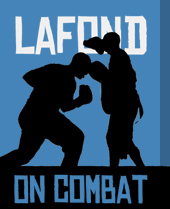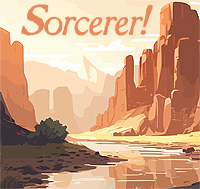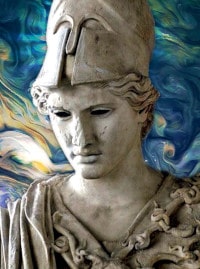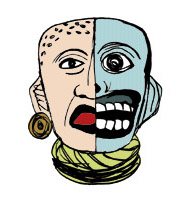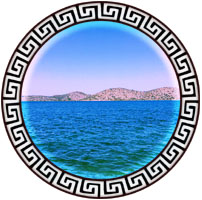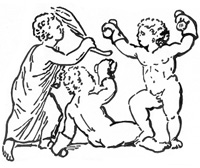Thank God, I’m a medieval catholic now!
For nine months I have toiled away at writing the novel God’s Picture Maker, about time-travelers going back to convince Leonardo da Vinci to journey to the 21st Century. In the mean time I have done a nonfiction book and hundreds of stories and articles. But still, it was a blow to my novelist’s ego after doing five novelettes and three novels in 2012, to struggle through one in a year. I found it most difficult to arrive at a method of writing from Leonardo’s perspective.
To the extent that I have succeeded I owe a debt to the two authors whose books I used as my primary sources. They are both five-star works as far as I am concerned and will not therefore bother with separate reviews. In fact, I have flipped from one book to the other so many times per sitting as I checked and rechecked facts and suppositions that I cannot sort them out in my mind.
When I first read a book for research I begin with an unwillingness to take notes. The better the book is the sooner this arrogant impulse is submerged beneath a scandalous scramble to take notes. There are problems however. My right hand has been broken seven times and sprained scores of times. I always have at least one sprained finger and spend about six hours per week hitting bags and sparring partners with sticks wielded by this same struggling hand. I cannot write more than sentence before the hand is cramped into a palsied claw.
In addition to that I read my research material on the bus and while walking through the ghetto. My solution to notating, therefore, is one that you might expect from the murderer of over 600 books—I mark them up! I use the front interior page to make single word notes next to a page number. I do this after bracketing the passage indicated on the right margin of the text. From murderer to torturer—how far can one bookworm fall?
Leonardo
Discovering the Life of Leonardo daVinci
A Biography
Serge Bramly
Translated by Sian Reynolds
1991, Harper Collins, NY, 493 pages
The World of Leonardo
1452-1519
Robert Wallace and the Editors of Time-Life Books
1966, Time Inc. NY, 192 pages
[This book is a work of art in its own right and was a gift from Shoey, a man who passed away soon thereafter; this being his only treasured possession. I used book marks and index cards and never took it out of the house. It is a handsome slip-covered coffee table edition.]
I have a hard time separating these books in my mind’s eye at this point. I am not an artistic person in the least and had a difficult time with the subject matter. I expect, that by the time I am done proofing and editing the novel I will have forgotten most of the book notes I made. I won’t forget Leonardo though—what a fascinating person. The books in question did explore him from different perspectives.
The World of Leonardo was essential art history, and focused on defining the Italian Renaissance through the one person who most completely embodied the virtues that the age brings to mind. This piece was invaluable to me as I groped through the art in my ignorance, like a monkey at a craft show, trying to understand the work of the man I was attempting to depict in words. My initial reading of this book did establish a construct in my mind; a kind of picture frame where I could hang the artist in my mind’s eye surrounded by his creations. I should pull up short here and note that much of his work, as influential as it was, fell short of what he or his peers would have called a creation, but resided more in the realm of day dreams and pondering.
Leonardo is a biography in the modern intimate sense. Serge Bramly does an evocative job of walking us into the mind of Leonardo by beginning with Leonardo’s own reflection upon himself, for which he used an array of mirrors to effect a third person view of his own aged face; a red chalk sketch that is considered the best of its kind. This is the first hint for the neophyte such as myself that much of the man’s work was done in private and filed away, and that much of what he did for the public was never completed. I felt a weary kinship with him as I struggled with telling a small portion of his life’s story in fiction. If the novel had not been already listed as part of an ongoing series I would have left it unfinished on Chapter 17.
Some of the salient points of Leonardo’s life, better explored by Mister Bramly than Mister Wallace, were: he was born a bastard and therefore barred from entering his father’s 4th generation legal profession [lucky for us]; he was left-handed, resulting in a penmanship condition that was never corrected and required a mirror to read his notes; he was never able to learn Latin sufficiently to be regarded as a member of the educated class, thus driving him to redefine what it was to be an educated man; he was a vegetarian when that had very antisocial and possibly heretical connotations; he was not able to enjoy the intimate company of women and was attracted to handsome men, though does not appear to be ‘very gay’ by modern standards [This last subject is almost impossible for modern gaydar-equipped people to understand in a pre-modern light. It might be constructive to realize that the segregation of gays into a separate community is a purely modern phenomenon.] Leonardo seems to have essentially lived a life of abstinence.
Overall Leonardo is perhaps the most difficult historical figure to define; being so multifaceted as to defy explanation. Perhaps this is because he is among the very few self made people that we know of. He was profoundly shaped and affected by the conventions of his world. However he seems to have been less stifled than most of us, and of course far more gifted. It is also difficult, at this great distance, to guess at how much of his difference was from ‘a gift’, and how much was a result of his striving against the World Order; of forcibly and fiercely educating himself. I think it is a blend, but must give the weight to the later.
Leonardo worked for a man who had many accomplishments and began his adult life in a deep state of sorrow. This man, Andrea Verrocchio, was essentially his surrogate father, Leonardo’s ‘one-man university’. One social convention of the time and place was a criminal one and is echoed in the 20th Century code of the Italian-American Mafia: ‘Omerta’ or ‘criminal cool’. Such strict codes of behavior were commonly used as social masks to navigate the repressive social structure of the time, witch burning having come into vogue a few decades before Leonardo’s birth. A more pervasive personal ethic, which Leonardo seemed to delight in mining with the tools of his trade was ‘Sprezzatura’ or ‘ironic-detachment’, the wearing of the anatomical face like a mask to hide one’s desires and emotions. Leonardo must have made many uncomfortable, as many as he overjoyed with his art, being in the business as he was of peeling away earthly masks.
I really don’t know if I’d like Leonardo if I met him. But I do not think any of us could have imagined such a man if he had not lived, and lived in such a way as to leave us with his view of us and our world.


